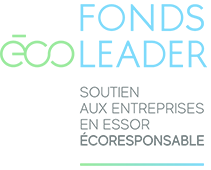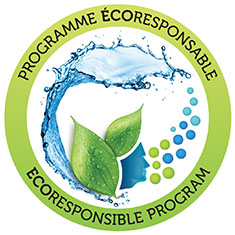
The ECORESPONSIBLETM Program from the Conseil des Industries Durables (Council of Sustainable Industries – CID) includes a set of strategies and tools to support organizations/businesses looking to improve their sustainable development management overall.
The “Attestation” chapter aims to raise awareness, educate and guide organizations in implementing an ecodesigned packaging or product approach, including its life cycle, from introducing responsible supply criteria to end-of-life management. This component is a part of the broad concept defined by circular economy. It notably aims to take into consideration the value chain as a whole within the packaging field (manufacturers, users, sorters, packagers, etc.) and products (manufactured goods) in order to adopt the best practices for optimizing the various links in the chain.
.
Pre-qualification Questionnaire
THE FOLLOWING GRID ALLOWS YOU TO ASSESS IF YOUR ECODESIGNED PACKAGING OR PRODUCT PROJECT MEETS THE ATTESTATION PROGRAM’S COMPULSORY MINIMUM REQUIREMENTS..
Toolbox
The following chart illustrates the main elements of an ecodesign approach, as well as its desired goals. For each goal, you will also find links to external resources that will help you take action.
1. How to start your ecodesign approach
A – Define your commitments
• Define your commitments in terms of sustainable development or eco-design;
• Develop an environmental policy;
• Define roles in ecodesign
.
B – Develop the skills of your team and formalize the roles and responsibilities
• Develop your ecodesign skills through courses, conferences or training;
• Ensure the sustainability of your approach;
• Identify eco-design tools;
• Define roles and responsibilities.
C – Define your goals
• Have eco-design objectives for the organization as well as for the range of packaging and products;
• Understand your initial situation;
• Identify the expectations of your customers and other stakeholders (eg municipality, sorting center, etc.), especially regarding recyclability;
• Monitor best practices and establish your position through market research.
2. How to implement the ecodesign approach?
A – Identify priority eco-design actions
• Identify the “hot spots” of your products or packaging;
Choose greener materials, eliminate potentially harmful materials;
• Use recycled materials;
• Establish conditions for optimal design;
• Reduce the impacts of formatting;
• Optimize secondary packaging and transport packaging;
• Improve the consumer experience;
• Facilitate recovery and end-of-life management
• Improve recyclability.
ÉEQ recommendations guide
Assessment of the environmental balance
List of eco-design tools
Problematic subjects for sorting centers
Charts of recyclable materials
Financial incentive to use recycled content
Main products sold (from sorting centers)
Example of sorting instructions
Price per material (for packaging)
B – Use ecodesign tools
• Apply the tools of the life cycle analysis;
• Use eco-labels;
• Use good practice guides;
• Develop lists of topics to prioritize or avoid.
C – Develop products or packaging
• Prototyping and testing;
• Terms of reference for your suppliers;
• Involvement of your suppliers.
Supplier approach – ECPAR Manual
Responsible Purchasing Network – How to Assess Suppliers
D -Measure benefits and communicate
• Measurement of economic and environmental benefits;
• Internal communication;
• External communication.



